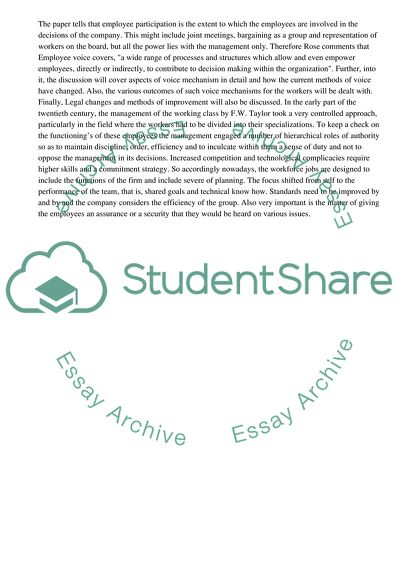Cite this document
(“Employee Voice Mechanisms and Their Outcome Essay”, n.d.)
Employee Voice Mechanisms and Their Outcome Essay. Retrieved from https://studentshare.org/business/1434112-employee-voice-covers-a-wide-range-of-processes-and-structures-which-allow-and-even-empower-employees-directly-or-indirectly-to-contribute-to-decision-making-within-the-organisation-rose-2008-p334-critically-evaluate-this-view-of-employ
Employee Voice Mechanisms and Their Outcome Essay. Retrieved from https://studentshare.org/business/1434112-employee-voice-covers-a-wide-range-of-processes-and-structures-which-allow-and-even-empower-employees-directly-or-indirectly-to-contribute-to-decision-making-within-the-organisation-rose-2008-p334-critically-evaluate-this-view-of-employ
(Employee Voice Mechanisms and Their Outcome Essay)
Employee Voice Mechanisms and Their Outcome Essay. https://studentshare.org/business/1434112-employee-voice-covers-a-wide-range-of-processes-and-structures-which-allow-and-even-empower-employees-directly-or-indirectly-to-contribute-to-decision-making-within-the-organisation-rose-2008-p334-critically-evaluate-this-view-of-employ.
Employee Voice Mechanisms and Their Outcome Essay. https://studentshare.org/business/1434112-employee-voice-covers-a-wide-range-of-processes-and-structures-which-allow-and-even-empower-employees-directly-or-indirectly-to-contribute-to-decision-making-within-the-organisation-rose-2008-p334-critically-evaluate-this-view-of-employ.
“Employee Voice Mechanisms and Their Outcome Essay”, n.d. https://studentshare.org/business/1434112-employee-voice-covers-a-wide-range-of-processes-and-structures-which-allow-and-even-empower-employees-directly-or-indirectly-to-contribute-to-decision-making-within-the-organisation-rose-2008-p334-critically-evaluate-this-view-of-employ.


